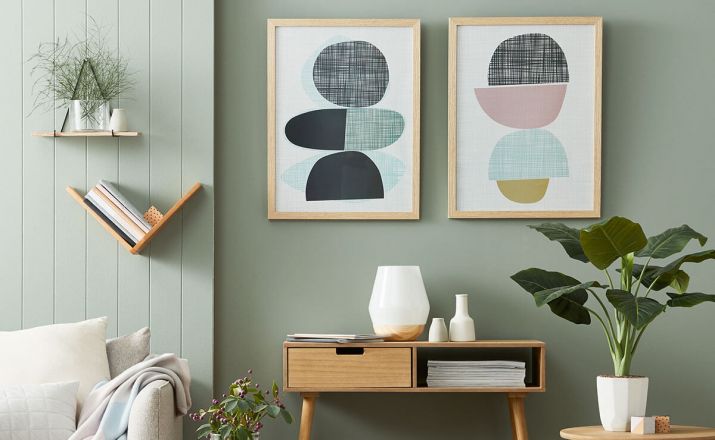9+ Home Decor Catalog Examples to Download
Owning your own place, whether it’s a tiny house in the suburbs, a too-expensive apartment in the city, or a massive mansion in an exclusive subdivision, is a dream come true for all of us. We all just want to have a space we can call our own. And when we finally get to have it, naturally, we want it to design it in a way that will make it look more friendly and comfortable.You may also see multi purpose catalog examples.
However, some of us go an extra mile. Not only do we try to make our house look livable, but we also want it to look great, amazing even. That’s where home decor comes in. It provides us with decorating rules to live by, suggestions to follow to the letter, and examples to give us inspiration in designing our place.You may also see furniture brochure designs
Home Decor Catalog Template
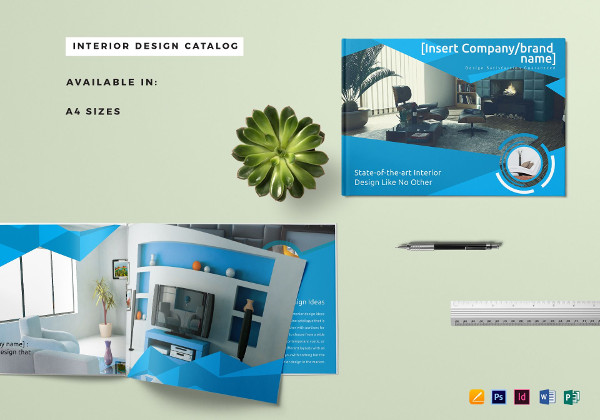
Free Home Decor Catalog Template
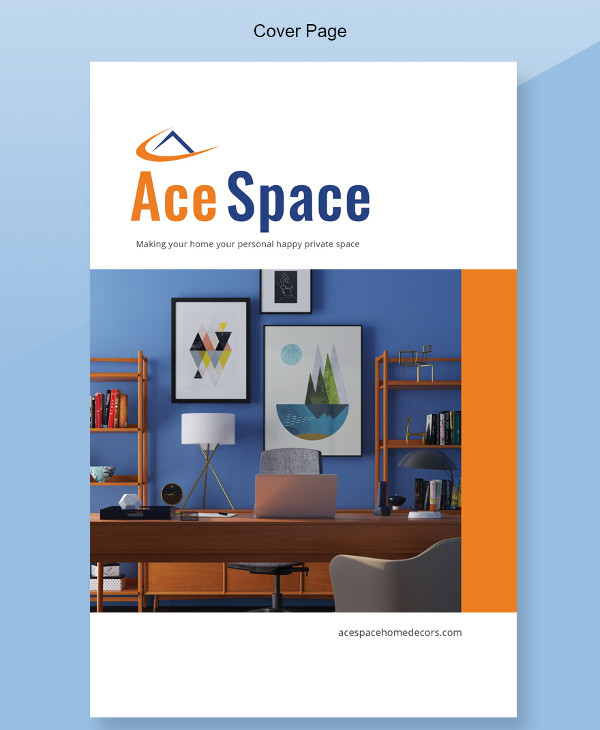
Lynx Home Decor Brochure Template
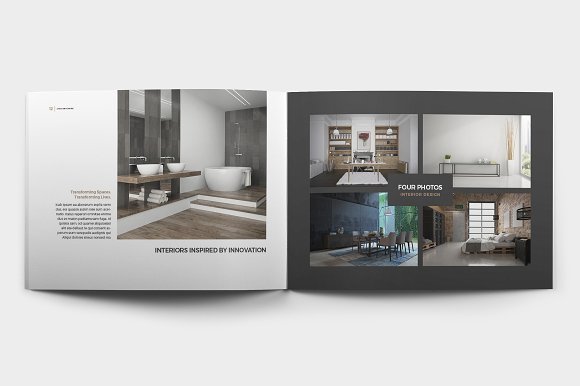
Most Popular Interior Design Styles
Modern, industrial, shabby, chic, the list goes on. A significant challenge many of us face is a lack of understanding or vocabulary to describe and define our personal interior design style. With an abundance of unique design styles, it can be daunting to decipher which style will work best for you. Some also enjoy combining elements of several styles to create their ideal look.You may also see advertising brochure examples
A great starting point for an interior design project is to learn a bit about each of the styles and how they differ from one another.
1. Modern
Modern is a broad design term that typically refers to a home with clean, crisp lines, a simple color palette, and the use of materials that can include metal, glass, and steel.
Modern design employs a sense of simplicity in every element, including furniture. A word that is commonly used to describe modern style is sleek, and there is not a lot of clutter or accessories involved with a modern style.You may also see it service catalog design
Notice bachelor pads in movies where the place is covered by black, white, and gray, and a lot of space? That’s modern for you. However, the abundance of free space isn’t synonymous with empty or sparse. In fact, it makes one feel the exact opposite of those things. It’s airy, comfortable, and neat.
2. Contemporary
Modern and contemporary are two styles which are frequently used interchangeably. Contemporary is different from modern because it describes design based on the here and now.You may also see multipurpose portfolio catalog examples
The primary difference separating modern and contemporary design style is that modern is a strict interpretation of design that started in the 20th century. Contemporary, on the other hand, is more fluid and can represent a sense of currency with less adherence to one particular style. For example, contemporary style may include curving lines, whereas modern design does not. Basically, it adapts designs and styles that are currently the trend.
3. Minimalist
This is the new thing in home decor right now. Gone are the days when people large rooms filled with intricate furniture, a lot of paintings on the walls, and a plethora of statues. Minimalist is inspired by modern design and simplifies it further.You may also see clothing catalog designs
Color palettes are neutral and airy; furnishings are simple and streamlined, and nothing is excessive or flamboyant in accessories or decor. Minimalism is ultimately defined by a sense of functionality and ultra-clean lines.
4. Industrial
Industrial style, as the name implies, draws inspiration from a warehouse or an urban loft. Yes, it doesn’t exactly sound attractive, but industrial-styled homes are one of the most stylish, without compromising comfortability and homeliness, design inspirations in this list.You may also see home product catalog designs.
There’s a sense of unfinished rawness in many of the elements, and it’s not uncommon to see exposed brick, ductwork, and wood. An iconic home with an industrial design theme would be a renovated loft from a former industrial building.
Think high ceilings, old timber and dangling metal light with fixtures with sparse functional furniture. There may possibly be one or two pieces of abstract art or photography to add a dash of color to an otherwise neutral color scheme derived from the primary materials of wood and metals.You may also see t-shirt catalog examples.
5. Mid-Century Modern
Mid-century modern is a throwback to the design style of the mid-1900s – primarily in the 1950s and the 1960s. There’s a retro nostalgia present in Mid-Century Modern Design, and also some elements of minimalism.
Functionality, or “fussy-free,” was the main theme for this design. It emphasizes on pared-down forms, natural or organic shapes such as an egg-shaped chair, easy-to-use contemporary designs, and simple fabrications. It easily complements any interior and also helps with seamless transition from interior to exterior.You may also see real estate catalog examples.
6. Bohemian
Bohemian is a popular style for home design and fashion. It reflects a carefree lifestyle with little rules, except to follow your heart’s desire. (A little corny for some, but shouldn’t that be the main rule we should all live by, starting with our home’s design?)
Bohemian homes may include vintage furniture and light fixtures, globally inspired textile and rugs, displays of collections, and items found in widely varied sources including flea markets and during one’s travels.You may also see minimal brochures.
It’s not uncommon to spot floor pillows and comfortable seating spaces when incorporating the bohemian style. This eclectic style can incorporate an ultra-glam chandelier paired with a well-worn rug and a mid-century chair. Within the bohemian style, there’s a laissez-faire attitude where anything goes as long as you love it.
7. Rustic
Rustic design is drawn from natural inspiration, using raw and often unfinished elements including wood and stone. The rustic design may incorporate accessories from the outdoor with warmth emulating from the design and architectural details that may include features like vaulted ceilings adorned with wood beams or reclaimed wood floors. Many designs now integrate rustic designs with more modern furnishings and accessories.You may also see toy catalog examples.
8. Hollywood Glam
Also referred to as Holywood Regency, Holywood Glam is a design style that tends to be luxurious, over-the-top and opulent. It’s a dramatic design style, thus the name, which is perfect for a homeowner who enjoys making a statement, and a loud one at that. This design style can incorporate some features of Victorian design, including plush, velvet furnishings, tufting, and antiques. The color palettes are particularly bold – think purples, reds, and turquoise.You may also check out here photography portfolio catalog designs.
9. Traditional
Traditional interior design style stems from a variety of old-school European styles. Together, they form what is now referred to as traditional. Elements of this design include:
- Classic European decor;
- Elaborate moldings and wood paneling;
- Built-in cabinetry;
- Elegant furnishings and antique pieces;
- Pairings of furniture and accessories;
- Neutral palette with vibrant colors for furniture and accent pieces;
- Expensive textiles like silk, velvet, cashmere, or comfy fabrics like cotton or linen; and
- Intricate tiles and wood floor patterns.
10. Transitional Interior Design
The transitional interior design style is quite an elusive style that spans multiple styles, even tying traditional or long-standing styles together with modern or contemporary design elements. It’s extremely popular right now among professional designers. In fact, it’s very easy to confuse contemporary with transitional. To help you identify which is which, here are some of transitional interior design’s elements:
- Curved furnishings with straight-lined lacquered finishes
- Limited use of accessories
- Use of impactful art as focal points
- Neutral color palette
- Textural elements such as wood, glass, lacquer, rattan, fabric, steel, and metal.
Stylish Home Decor Lookbook Template
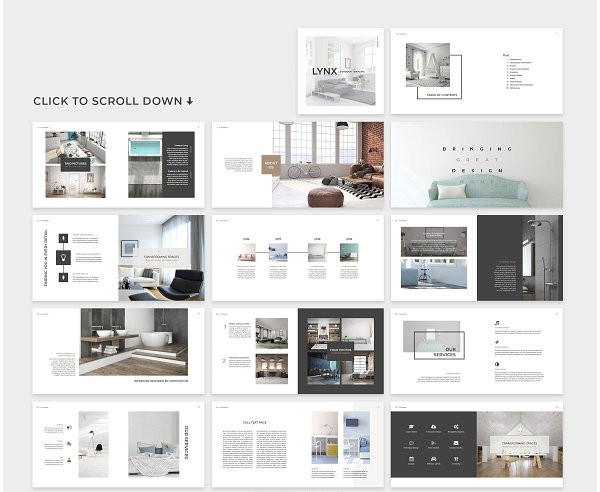
Editable Home Decor Catalog Templates
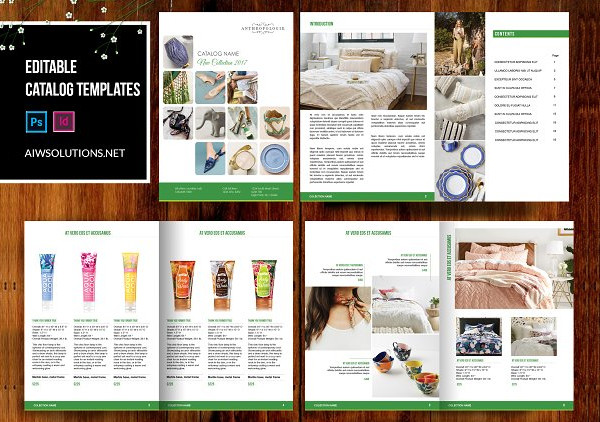
Rigel Home Decor Brochure Sample
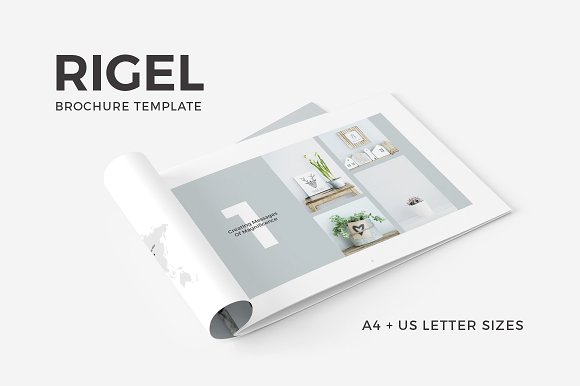
Naming Your Decorating Style
Articulating your design style is the key to creating a room that really reflects it. Have no fear. You can easily identify the look you crave. Begin by either taking a quick quiz or, for a more in-depth examination, follow the steps below.
1. Look at your furniture.
With a piece of paper in hand, walk from room to room and make two truthful lists: “Love It” and “Wish I Could Replace It.” Catalog everything you can, including the art pieces that you have, and make sure that you are being honest. Home decor, like so many things, is all based on how things make you feel.
2. Gather items that you cherish.
Check the top of your dresser, your mantel, your bookshelves, then pull special clothes from your closet. These things define what makes you feel beautiful and joyful. Use them as an inspiration for designing your home. Spread that joy into every inch of your personal space.You may also check out here advertising catalog examples.
3. Think about places you love and why you love them.
If you could live anywhere at all, where would it be? Picture that dream house of yours. Then, think outside of your home. If you were invited to the Oscars, what would you wear? As random as this question may seem, it will move you beyond the limitations of your lifestyle and budget and into a new realm of creativity. It is the Oscars after all. Of course, aside from looking fabulous, you’d also want to look, well, you. You may also see restaurant catalog examples.
4. Look for common threads
designs, colors, shapes, materials, vibe – among the things you treasure. Look for home decor styles and see which ones you most jibe with. You may find yourself attracted to a blend of styles rather than just one; as you delve into the following rooms, note which features appeal to you. This will help you translate your taste into smart decorating choices.You may also see construction company catalog examples.
Chic Home Decor Ideas Catalog
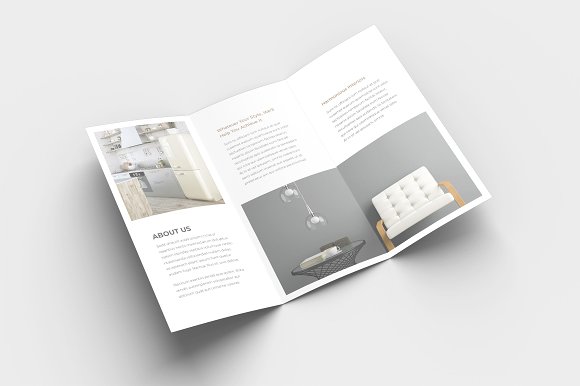
Home Decor Trifold Brochure Example
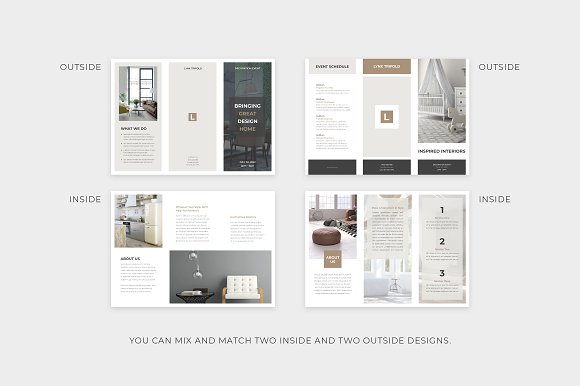
Real Estate Home Decor Brochure Example
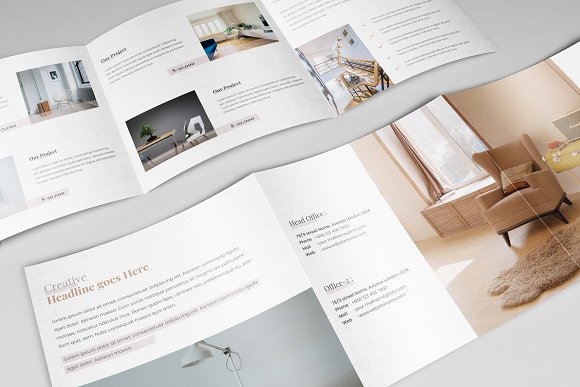
Home Trends to Avoid
Whether it’s hair or furniture, we’ve all made trendy choices that we regretted later on. Here are some of the biggest home trends of decades past that might just make you cringe now. And if you are thinking of designing or redesigning your house, make sure these things won’t be in it.You may also see sales catalogs
1. Fast Furniture.
Fast fashion refers to clothing that is factory-made, much cheaper version of what’s currently on the runway. The equivalent of this in home decor is “fast furniture,” which is an inexpensive design that you essentially buy knowing that you’ll toss it in a few seasons, or the next time you move.
These easy-to-assemble designs really blew up in the mid-1980s and have been going strong since. Although it can be a great way to save money, antiquing and repurposing old furniture, recycling and reusing existing decor are still better options than this.You may also see product catalog
2. Nautical Motifs.
Anchors, sailor’s rope, and seashells belong on the actual beach, not in your living room. Even if you own an oceanside home, just leave the cheesy nautical decor. You can achieve beachy vibes without being too obvious. Pick a color palette inspired by your beautiful surroundings, or include subtle decor elements like coral and driftwood.You may also see wholesale catalog examples.
3. Edison Bulbs.
Every hip coffee shop from Brooklyn to Portland has these antique-style lights hanging from the ceiling, and we’re over it. The “exposed” lighting look belongs back when Thomas Edison came up with the original design. Not today where a lot of fabulous new ideas are emerging by the second. It’s just plain harsh lighting.
4. Tuscan Kitchens.
This style was the star during the early 2000s, and we can certainly not idea its appeal. However, in today’s kitchens, we are focusing on creating a light, airy space to cook. Gone are the days when people wanted to emulate a dark Italian villa.You may also see business catalogs
My Home Interior Home Decor Template

Home Decor Brochure Example
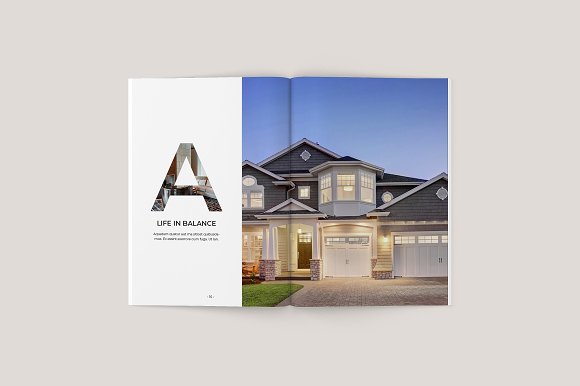
5. Wallpaper Borders.
Whether it runs through the middle of a nursery as it usually does, or trims the top of your wall, this trend should stop short anytime after the 90s. There are now a lot of fashionable and super fund wallpapers to choose from, in lieu of this old style.You may also see fashion catalog.
6. Dusty pastels.
In the 80s, all pastels were either dusty blue or dusty pink, which gives them that perpetual just-not-quite-clean look. Today, colors are more decisive. If you want pink, let it all be pink. If you want blue, pick a shade and stick with it.You may also see interior design catalog examples.
7. Ferns Everywhere.
Yes, it’s obviously a beautiful plant, but you don’t need one in every room. In the 90s and early 2000s, these plants took over homes, but there is no need to make your living room look like a greenhouse.
8. Plaid.
Plaid started in the 70s. Hopefully, it will stay there. As with many other items on this list, sticking to small doses is key. Besides, why would you want to cover your house with tiny connecting squares, when you can have a few randomly strewn about the room for a far more chic look?
9. Bean Bag Chairs.
Yes, we love these. They don’t only remind us of the sweet 90s, these are also a handy chair perfect for eating a slice of pizza in between college courses. But it should never leave your dorm room. There are many cozy reading chairs you can use as an alternative to these.You may also see cookbook catalog designs
Home decor is more than what’s fashionable or pretty. At the end of the day, it will be about creating a personal space where you can feel comfortable and safe. Hopefully, with these tips and ideas, you can design the perfect home for yourself and your family.You may also see travel catalog.


